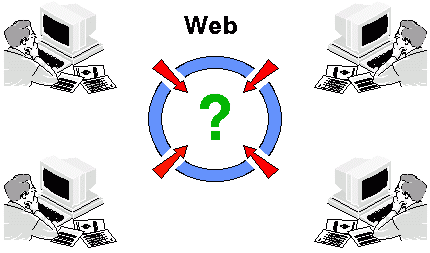HydroWeb
HydroWeb

Concept
HydroWeb is an educational initiative within IAHR-EPD since 1999, dealing with web-based collaborative engineering in hydro-environment sciences on master level. The idea of HydroWeb is simple: participants from different universities are forming teams to run online a river modelling project via the internet in a predefined time window on a shared web-based project platform. Key focus in this course is the development of a "technical culture" for online team work using web technology and information sharing principles in engineering projects.
Team Composition
A typical HydroWeb team is composed by 6-8 participants, e.g. formed by 2-3 students from at least three different partner universities. The teams are composed in a way to ensure a high level of heterogeneity in respect to interdisciplinary and internationality. The interdisciplinary can be increased by mixing participants with different background, e.g. from hydro-engineering, structural engineering, hydrology, environmental sciences, geo-sciences or urban/rural planning. Internationality is given by the partner universities from different countries and continents as well as the international students from all partner universities. This also leads to a multi-cultural team composition and challenging human aspects in the collaboration.
Web-based Project Platform
Key idea of HydroWeb is to share all resources on a web-based project platform. Students do not need special software or related licenses to participate: a standard notebook/PC/tablet with internet connection is all they need. The simulation software, model data, project documents and team reports are provided on a set of servers in the web using the principle of information sharing instead of the conventional concept of information exchange. The servers are accessible via the internet (Remote Desktop Connection, Web Browser). The web-based project platform is currently using Google services (Site, Drive, Calendar, Groups) as well as standard communication/conferencing tools like e-mail, Hangout, Skype and Facebook. This technical backbone allows an efficient way of project management and performance by the team members, independent from their physical location. The contact to the course supervisor/tutor is also given via the web-based project platform. Thus HydroWeb is also an e-learning course. Further background information can be found here.
Case Study
Web-based collaborative engineering cannot be taught only by lectures. Students need a real case study engineering project to develop their own soft skills and competences as well as to make their experience in the application of modern ICT for team work. As there is a time limit in the educational system for such case studies, HydroWeb is using a compromise between a complex case study from profession/research and a well-prepared academic case study example. The used case study is based on a small river in the South of Denmark with tidal impact from the North Sea as well as human interaction by dikes, dams, polder systems, pump stations, and weirs/gates. For this river system a 1D hydrodynamic, numerical model has been set-up and prepared to be used within the course, using a standard 1D river simulation software package for flood analysis. The students have to perform project work packages within a time window of four weeks using this basic simulation model for different scenarios by team work. Even if these tasks are well prepared and simplified for the academic purpose of a four week course, all tasks have a background from reality and can be discussed by the students like in a real engineering project with high complexity and longer duration. However, the main focus in HydroWeb is on web-based collaborative engineering and thus the selected case study can be replaced by other projects from similar or other type of problems such as hydrology, groundwater management or urban water supply. The river modelling project is the playground for the purpose of HydroWeb and as a side effect the participants are also getting in touch with river modelling.
History
HydroWeb was established in 1999 in a collaboration of BTU Cottbus / Germany and IHE Delft / Netherlands supported by DHI / Denmark as an outcome of a EU research project (ELTRAMOS). Between 2000 and 2005, HydroWeb was offered by BTU Cottbus as open course within the IAHR-EGW for partner universities, particularly IAHR student chapters. For example in 2003, 109 students from 12 different partner universities from America, Europe and Asia participated in a total of 10 teams. IAHR student chapters from Iowa, Stuttgart, Napoli and Thessaloniki were involved with partner universities from Berlin, Bratislava, Budapest, Cottbus, Isfahan, Ljubljana, Moscow, Nitra, St. Petersburg, Stuttgart, Tehran, Vienna and Warsaw.
Since 2005 HydroWeb became a core course within the international Erasmus Mundus MSc course programme EuroAquae, offered by five European universities (Barcelona, Budapest, Cottbus, Nice, Newcastle). Offered annually as part of semester 1, this course is an important integration element for the students and lecturers in the different partner locations and offers a unique opportunity to obtain experiences in web-based collaborative engineering within an international environment. The innovation in ICT in the last decade has been constantly considered in HydroWeb by replacing some tools as well as using new technical solutions and methods for the web-based team work. Nonetheless, the key idea of HydroWeb is still valid and the ongoing internet revolution is even underlining the increasing importance of skills and competences in web-based engineering. IAHR-EPD plans to establish HydroWeb as standard course on master level for its Young Professionals Networks. In 2014 HydroWeb will be offered in October / November as IAHR-EPD activity.